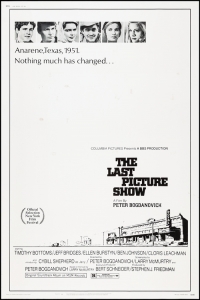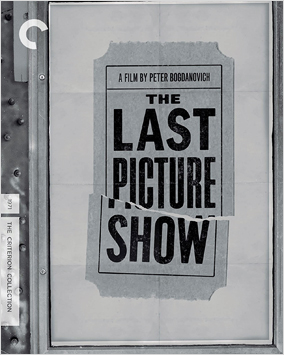
THE Q&A
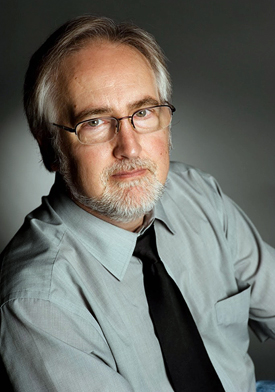 Raymond Benson is the author of over forty published books. He is most well-known as the third—and first American—continuation author of original James Bond novels commissioned by the Ian Fleming Estate, and for his acclaimed and best-selling five-book serial, The Black Stiletto. Raymond has taught Film History college courses in New York and Illinois for years, contributes a regular column and occasional pieces in Cinema Retro magazine (“The Essential Guide to Movies of the ‘60s & ‘70s”), and co-stars in Dann & Raymond’s Movie Club, a monthly live presentation on cinema history in the Chicago area (with Chicago’s Daily Herald film critic, Dann Gire), now in its 15th season. www.raymondbenson.com
Raymond Benson is the author of over forty published books. He is most well-known as the third—and first American—continuation author of original James Bond novels commissioned by the Ian Fleming Estate, and for his acclaimed and best-selling five-book serial, The Black Stiletto. Raymond has taught Film History college courses in New York and Illinois for years, contributes a regular column and occasional pieces in Cinema Retro magazine (“The Essential Guide to Movies of the ‘60s & ‘70s”), and co-stars in Dann & Raymond’s Movie Club, a monthly live presentation on cinema history in the Chicago area (with Chicago’s Daily Herald film critic, Dann Gire), now in its 15th season. www.raymondbenson.com
Raymond was previously interviewed for this column’s retrospective on 2001: A Space Odyssey. He spoke to The Bits again recently about the appeal and legacy of The Last Picture Show.
Michael Coate (The Digital Bits): How do you think The Last Picture Show ought to be remembered on its 50th anniversary?
Raymond Benson: There are many things about the film that will be remembered, but perhaps the biggest, for me, are the revelations of the casting and the performances. While many of the actors had done previous work in film and television, I think for most of us in the audience in 1971, we didn’t really know them. Ben Johnson we knew, but not like he is here, and we may have seen Cloris Leachman. Both deserved their Oscars. Jeff Bridges and Ellen Burstyn—oh my. Also nominated. Such star power. New to me at the time. Then there were the others new to me, whether this was their debut or not—Timothy Bottoms, Cybill Shepherd, Randy Quaid, Eileen Brennan, Clu Gulager… For all of these actors, The Last Picture Show made their careers.
The Digital Bits: What was your first impression of the film?
Benson: I saw the film on first release in Odessa, Texas, where I grew up. Odessa is in pretty much the same locale as the movie—West Texas—and my town mentioned by the characters in the picture as where they’d go on the weekend to have a good time. At the time Odessa was larger (but not by much) than fictional Anarene, so it was considered the “big city” by the small-town folk there. I felt as if I knew those characters and that world. I was blown away by the movie.
The Digital Bits: In what way is The Last Picture Show a significant motion picture?
Benson: The film probably did more for original author Larry McMurtry than the previous adaptation of his work (Hud). I, for one, started reading his books in the 70s. I’ve already mentioned that it certainly launched the careers of most of the cast, but the same is true for director Peter Bogdanovich. It wasn’t Bogdanovich’s first movie, but it might as well have been. We all knew his name after The Last Picture Show.
The Digital Bits: How does the film compare to the source material?
Benson: I did read the novel many years ago and I seem to recall that the film was mostly faithful to it. The book was sexier, I think! McMurtry knew and lived in West Texas and was able to evoke the milieu in profound ways. As a native West Texan, I was always drawn to his books after I discovered them. McMurtry brought back some of the characters from The Last Picture Show—mostly Duane—in four subsequent novels, so the success of the film paved the way for those.
The Digital Bits: In what way was Peter Bogdanovich an ideal choice to direct, and where does the film rank among Bogdanovich’s body of work?
Benson: For me, this is Bogdanovich’s crown jewel. I don’t like to use the word “best” when describing art, so I’ll say it’s my “favorite” of his titles. For several years, I made it a point to see anything he did after The Last Picture Show, because of that movie’s strengths.
The Digital Bits: Which are the film’s standout scenes?
Benson: I love all the scenes on the main street—the lonely, deserted, windy, tumbleweed-dotted main street where the “picture show” stood. It really captured that ghost town feeling of those small hamlets in West Texas where I grew up. Those towns are in black-and-white! Other standout moments are, of course, the skinny-dipping pool party—how could it not be memorable? The final kitchen scene with Bottoms and Leachman is always a heart-clutcher. I was amazed that the diegetic music on the radio in the scene was both sides of It’s In the Book by Johnny Standley (the drunk “preacher” talking about Little Bo Peep losing her sheep, and singing about “Grandma’s Lye Soap”). I had grown up with that 45 single in the house, and I knew the comedy routine by heart. It added an oddly quirky counterpoint to the tragedy of the scene.
The Digital Bits: Any thoughts on the performances in the film?
Benson: Jeff Bridges and Ellen Burstyn obviously went on to greater glory and numerous Oscar nominations and a respective win down the road. Cloris Leachman did very well for herself after winning the Oscar for the movie. Ben Johnson showed us that he was more than a supporting player in a John Ford western. The protagonist, Timothy Bottoms, was effective enough, but the role was nothing flashy. I’ve always liked his work, and it’s too bad that he never reached the heights of success that his co-stars did.
The Digital Bits: Do you believe The Last Picture Show has been well represented on home video? Does it deserve lavish special-edition treatment like so many other movies have received?
Benson: The Criterion Collection’s edition of the film in its boxed set of the BBS Productions is magnificent. Most home video versions of the film are a few minutes longer than the theatrical cut, as Bogdanovich restored a couple of scenes and lengthened some. The BBS people (who were executive producers of the film)—Bert Schneider, Bob Rafelson, and Stephen Blauner—were Hollywood mavericks who played on the edge of the sandbox. I adore most of the titles in that boxed set, and Criterion did a “lavish special-edition treatment” of The Last Picture Show!
The Digital Bits: Any thoughts on the sequel, Texasville?
Benson: I’m afraid it’s not very memorable. I liked McMurtry’s book, though.
The Digital Bits: How would you describe The Last Picture Show to someone who has never seen it?
Benson: This is a drama about a small, dying town in West Texas during the 1950s. It’s a place where people have secrets that are impossible to keep, desires that are forbidden but irresistible, and where life exists in a bubble. With excellent performances from an ensemble cast, moody and insightful direction by Peter Bogdanovich, and a lovely melancholy that will stay with you long after viewing it, The Last Picture Show is one of my favorite movies.
The Digital Bits: What do you think is the legacy of The Last Picture Show?
Benson: Again, the actors and performances are its legacy. It’s difficult to think of another ensemble film from the period in which so many of the cast went on to bigger and better things (maybe American Graffiti?). For me, it’s also the quintessential Larry McMurtry film adaptation, even more so than the TV movie of his acknowledged masterpiece, Lonesome Dove.
The Digital Bits: Thank you, Raymond, for sharing your thoughts about The Last Picture Show on the occasion of its 50th anniversary.
---END---
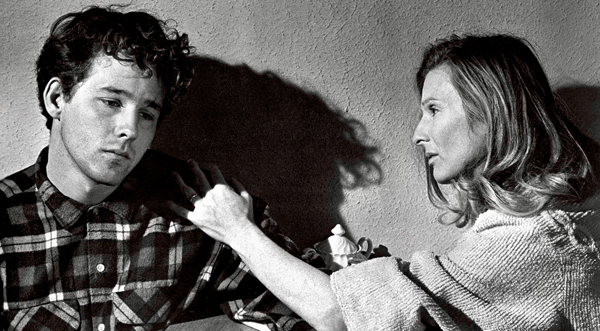
IMAGES:
Selected images copyright/courtesy BBS Productions, Columbia Pictures, Columbia TriStar Home Video, The Criterion Collection, Last Picture Show Productions, National Screen Service, Sony Pictures Home Entertainment.
SOURCES/REFERENCES:
The primary references for this project were the motion picture The Last Picture Show (Columbia, 1971), regional newspaper coverage, trade reports published in Boxoffice and Variety, and an interview conducted by the author. All figures and data pertain to North America (i.e. United States and Canada) except where stated otherwise.
SPECIAL THANKS:
David Ayers, Don Beelik, Raymond Benson, Diane Buckley (Virginia Beach Public Library), Lanham Bundy (Providence Public Library), Kevin Geisert (Norfolk Public Library), Isaac (Buffalo & Erie County Public Library), Allison Mason (Jacksonville Public Library), Stan Malone, W.R. Miller, Jennifer Pawlowski (Tulsa City-County Library).
IN MEMORIAM
- Joe Heathcock (“The Sheriff”), 1914-1980
- Jessie Lee Fulton (“Miss Mosey”), 1912-1983
- Walter Scott Herndon (art director), 1927-1984
- Robert Surtees (director of photography), 1906-1985
- Richard Amsel (key art/promotional material illustrator), 1947-1985
- Harold Schneider (associate producer), 1939-1994
- Helena Humann (“Jimmie Sue”), 1942-1994
- Bill Thurman (“Coach Popper”), 1920-1995
- Grover Lewis (“Mr. Crawford”), 1934-1995
- Charles Seybert (“Andy Fanner”), 1925-1995
- Ben Johnson (“Sam the Lion”), 1918-1996
- Stephen J. Friedman (producer), 1937-1996
- Joye Hash (“Mrs. Jackson”), 1929-2003
- Noble Willingham (“Chester”), 1931-2004
- Sam Bottoms (“Billy”), 1955-2008
- Floyd Mahaney (“Oklahoma Patrolman”), 1926-2009
- Gary Brockette (“Bobby Sheen”), 1947-2010
- Don Guest (unit production manager), 1934-2010
- Bert Schneider (executive producer), 1933-2011
- Polly Platt (design), 1939-2011
- Eileen Brennan (“Genevieve”), 1932-2013
- Jack Mueller (“Oil Pumper”), 1925-2014
- Janice O’Malley (“Mrs. Clarg”), 1938-2016
- John Hillerman (“Teacher”), 1932-2017
- Robert Glenn (“Gene Farrow”), 1925-2018
- Cloris Leachman (“Ruth Popper”), 1926-2021
- Larry McMurtry (novel and screenplay co-writer), 1936-2021
- Peter Bogdanovich (director and co-writer), 1939-2022
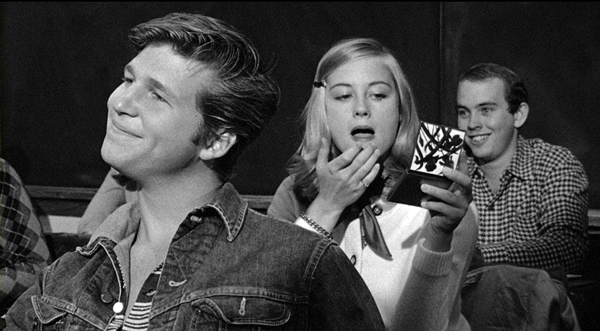
- Michael Coate
Michael Coate can be reached via e-mail through this link. (You can also follow Michael on social media at these links: Twitter and Facebook)


